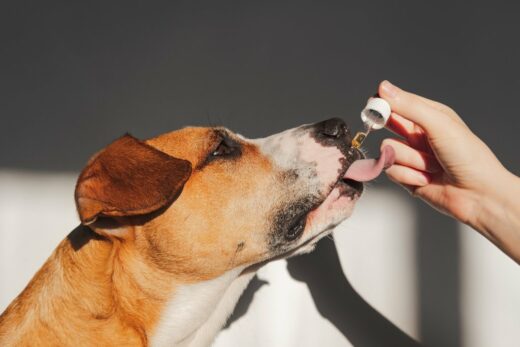Some dogs consume their food at a perfectly reasonable pace. Others act like you’ll take their food away from them if they don’t gobble it up as quickly as possible. This problem may be especially acute if you have a rescue dog that once lived in the streets. These animals may have struggled to find enough food to survive and had to compete with other dogs for scraps.
If your pup has developed a frenzied raccoon style of eating, you may worry—reasonably—about its impact on their digestive health. Besides the potential to cause stomach upset, in some extreme cases, it can actually threaten their life.
Thankfully, speedy eating is a bad habit you can break, by using a product known as a slow feeder bowl. As its name implies, a slow feeder bowl can regulate the speed at which a dog consumes food.
What is a Slow Feeder Dog Bowl?

A dog using a slow feeder bowl (sometimes referred to as an interactive feeder) will need to solve a puzzle, or figure out a way to navigate obstructions that prevent excessively speedy food consumption.
Barriers to fast eating may include grooves, bumps, or ridges distributed throughout the bowl. They can be made from different materials, including plastic, stainless steel or silicone. Most slow feeders are bowl-shaped, while others come in the form of mats. These are designed primarily for small or flat-faced dogs, who might struggle to retrieve their food from a deep, concave object.
Alternatively, you could purchase a slow feeder insert, which converts your dog’s standard bowl into a slow feeder bowl.
Benefits of a Slow Feeder Dog Bowl
A good-quality slow feeder bowl can help keep your dog healthy and safe, protecting them from their own worst instincts.
Benefits include:
- Deceleration of the eating process. A slow feeder bowl will slowly but surely change your dog’s relationship with food, planting the idea that good things come to those who wait. As time progresses, slower eating will become a natural behavior.
- Lower likelihood of overeating. A slower pace of eating will give a dog’s stomach time to send signals to the brain to let it know that no more food is required. When a dog is gulping down food without restraint, they can easily overfill themselves, as the stomach can’t signal the brain fast enough to prevent overconsumption.
- Improved digestion. If you use a slow feeder bowl, your dog will be taking smaller mouthfuls and will no longer be able to gobble everything up in a few bites. This encourages a more deliberate approach to eating, which will inevitably lighten the load on their digestive system.
- Reduced risk of choking and vomiting. A dog who virtually inhales food could get something stuck in their throat, which leads to choking or vomiting. A slow feeder bowl helps to prevent the swallowing of over-large pieces.
- Less gastrointestinal discomfort. When the stomach fills with poorly chewed food, it can take a long time to digest everything properly. This can cause a heavy stomach, clogged intestines, gas and constipation, leaving your dog feeling sluggish, lethargic, and altogether miserable.
- Mental stimulation. A slow feeder bowl will keep your dog busy solving puzzles. This can be especially nice if you have a high-energy dog, since it will encourage focus and concentration.
- Eliminate the dangers of bloating. A dog who sucks up food like a vacuum cleaner could be at risk for a condition known as gastric dilatation-volvulus (GDV), often referred to simply as bloating. A dog who eats too fast can become bloated from taking in prodigious quantities of air, which can cause excess pressure on the stomach, intestines and circulatory system. If blood flow is restricted because of this pressure, a dog could go into shock, and this could become a life-threatening condition.





